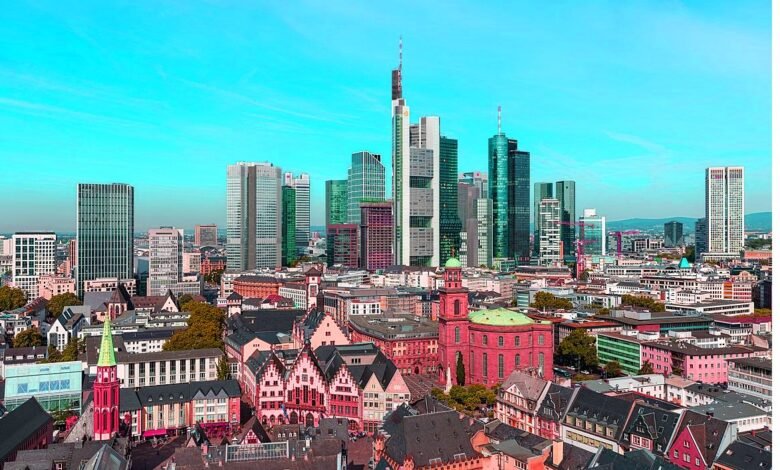
Germany, known as the economic powerhouse of Europe, boasts a solid and resilient economy that serves as a model for many nations worldwide. The strength of the German economy is not merely a result of chance. Still, it is built upon a robust foundation established through historical context, strategic investments, and a unique blend of economic policies. In this article, we explore the multifaceted reasons behind the enduring strength of the German economy.
Historical Context and Factors Contributing to Strength
Germany’s journey to economic prominence can be traced back to its remarkable post-World War II recovery. Following the devastation of the war, Germany embarked on a path of reconstruction and industrialization, laying the groundwork for its future economic success. The Marshall Plan, a massive aid program initiated by the United States, provided crucial financial assistance to rebuild infrastructure and jumpstart economic development.
Strong Industrial Base
Central to the German economy’s strength is its robust industrial base, which encompasses a diverse range of sectors including automotive, machinery, engineering, and technology. Germany’s manufacturing prowess is renowned worldwide for its emphasis on quality, precision, and innovation. The automotive industry, led by iconic brands such as Volkswagen, BMW, and Mercedes-Benz, is a cornerstone of the German economy, contributing significantly to exports and employment.
Skilled Workforce and Vocational Training
A key factor in Germany’s economic success is its highly skilled workforce, nurtured through a comprehensive vocational training system. The dual education system, combining classroom instruction with practical apprenticeships, ensures that individuals acquire both theoretical knowledge and hands-on experience. This emphasis on vocational training not only addresses the skills gap but also fosters a culture of innovation and adaptability within the workforce.
Innovation and Research
Germany’s commitment to innovation and research has been instrumental in driving economic growth and competitiveness. The country consistently ranks among the top global spenders on research and development (R&D), with investments flowing into critical sectors such as automotive, engineering, pharmaceuticals, and renewable energy. Close collaboration between industry, academia, and research institutions fosters a dynamic ecosystem that fuels technological advancements and fosters innovation-driven entrepreneurship.
Export-Oriented Economy
Germany’s export-oriented economy plays a pivotal role in its economic strength and resilience. The country is renowned for its high-quality manufactured goods and enjoys strong trade relationships with countries worldwide. The European Union (EU) provides a vast market for German exports, while strategic partnerships and trade agreements facilitate access to global markets. The diversification of export products, ranging from automobiles and machinery to chemicals and electronics, contributes to the stability of Germany’s export-driven model.
Read More: New Ideas for a Sustainable Future in Germany
Stable Economic Policies
Prudent fiscal policies and sound monetary management underpin Germany’s economic stability. The country maintains a balanced budget approach, with a focus on fiscal discipline and debt sustainability. The European Central Bank (ECB), as the central bank of the Eurozone, implements monetary policies aimed at maintaining price stability and supporting economic growth. This stability and predictability in economic policies create a favorable environment for investment, development, and innovation.
Infrastructure and Logistics
Germany’s efficient infrastructure and logistics network are crucial enablers of its economic strength. The country boasts a well-developed transportation network, including modern highways, railways, ports, and airports, facilitating the movement of goods within Germany and across international borders. Investments in digital infrastructure, including high-speed internet connectivity and digitalization initiatives, further enhance efficiency and productivity across various sectors of the economy.
Small and Medium-Sized Enterprises (SMEs)
Germany’s Mittelstand, comprising small and medium-sized enterprises (SMEs), forms the backbone of the country’s economy. These companies are characterized by their innovation, flexibility, and adaptability, contributing significantly to employment, economic growth, and exports. The Mittelstand’s focus on niche markets, specialized products, and craftsmanship underscores Germany’s entrepreneurial spirit and resilience.
Social Market Economy
Germany’s social market economy represents a unique model that balances market forces with social welfare principles. The government intervenes to ensure fair competition, consumer protection, and social cohesion while fostering a dynamic and competitive business environment. Worker protection laws, including regulations on working conditions, wages, and collective bargaining, contribute to a high standard of living and social stability.
Read More: Smart Factories Revolutionizing German Industry in 2024
Conclusion
In conclusion, the strength of the German economy is a culmination of historical resilience, strategic investments, and a balanced economic model that emphasizes innovation, skilled labor, export orientation, and stability. By leveraging its strengths in manufacturing, research, and exports, Germany continues to thrive in an increasingly competitive global economy.
FAQs(Why is the German Economy So Strong?)
How does Germany’s vocational training system contribute to its skilled workforce?
Germany’s dual education system combines theoretical knowledge with practical training, ensuring that individuals acquire industry-relevant skills.
What role do research and innovation play in Germany’s economic success?
Germany’s commitment to R&D fosters technological advancements, enhances competitiveness and drives economic growth across various sectors.
How does Germany maintain a balanced budget and fiscal discipline?
Germany’s prudent fiscal policies focus on debt sustainability, balanced budgets, and long-term fiscal planning, ensuring economic stability and growth.
What are some key features of Germany’s export-oriented economy?
Germany’s export-oriented model relies on high-quality manufacturing, diversified export products, and strong trade relationships with global partners.
How does Germany support small and medium-sized enterprises (SMEs)?
Germany’s Mittelstand benefits from a favorable business environment, access to finance, and government support programs aimed at promoting entrepreneurship and innovation.











